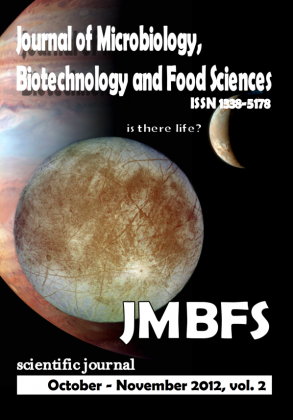CADMIUM AND DIAZINON-INDUCED CHANGES IN THE RAT TESTIS STRUCTURE AFTER A PERORAL ADMINISTRATION IN DRIKING WATER
Keywords:
testis, histology, morphometry, rat, cadmium, diazinon, fertilityAbstract
The present study was carried out to elucidate the effects of heavy metal cadmium (Cd) and a nonselective organophosphorus insecticide diazinon (DZN) administration on the testis structures in adult male rats in subchronic toxicity experiments. A total of 40 Wistar 4 weeks old rats were randomized into 4 groups of 10 animals each and dosed with cadmium (Cd) 30 mg/l (group A), diazinon (DZN) 40 mg/l (group B), and in combination of Cd and DZN (30 and 40 mg/l, respectively, group C) per os in drinking water for 90 days. Testicular histology using a light microscopy and morphometry using PC morphometric software M.I.S. Quick Photo were evaluated. The morphometric data supported histological observations at tubular and interstitial level. Reduced seminiferous epithelium (P<0.001) in Cd group showed desquamation of germ cells, cellular degeneration and necrosis. Increase in epithelial vacuoles and dilated blood vessels relative volume (P<0.001) were observed in all experimental groups. Cd and DZN and their combination exerted changes in the reproductive parameters which could be subsequently negatively related to male fertility. These data provide a novel insight into the reproductive toxicology of Cd-DZN in male rats. However, results did not indicate synergistic or additional effect of simultaneous administration of both toxicants.Downloads
Download data is not yet available.
Downloads
Published
2012-10-01
How to Cite
Toman, R., AdamkoviÄová, M., Massányi, P., Cabaj, M., LukáÄ, N., Martiniaková, M., & Omelka, R. (2012). CADMIUM AND DIAZINON-INDUCED CHANGES IN THE RAT TESTIS STRUCTURE AFTER A PERORAL ADMINISTRATION IN DRIKING WATER. Journal of Microbiology, Biotechnology and Food Sciences, 2(2), 564–575. Retrieved from https://office2.jmbfs.org/index.php/JMBFS/article/view/7165
Issue
Section
Biotechnology
License
Copyright (c) 2012 Róbert Toman, Mária AdamkoviÄová, Peter Massányi, Michal Cabaj, Norbert LukáÄ, Monika Martiniaková, Radoslav Omelka

This work is licensed under a Creative Commons Attribution 4.0 International License.
All papers published in the Journal of Microbiology, Biotechnology and Food Sciences are published under a CC-BY licence (CC-BY 4.0). Published materials can be shared (copy and redistribute the material in any medium or format) and adapted (remix, transform, and build upon the material for any purpose, even commercially) with specifying the author(s).

